Time to cut to the chase. Here at Headstuff we’re not afraid to stare into the abyss. That’s why, this Halloween, our film writers decided to share their favourite horror movie villains. Tread carefully: you may leave this list a changed person.
Babadook – The Babadook (2014)
In the era of critically lauded, A24 produced, “elevated horror”, the spectres that haunt us tend to be spectres of something psychological, some deeply subsumed trauma. It’s old hat by now, but in many modern horrors, the ghosts are very much of our own making.
This is equally true of Jennifer Kent’s modern classic, The Babadook. The titular spectral being arrives in a classic, simple ghost story set-up: you receive a cleverly designed, yet ominous storybook, you read its beguiling and dread inducing words, and the Babadook is summoned. The shadowed, shifting, top hat-wearing wraith that appears is one of the most distinctive and memorable in horror.
And while its appearances are scary in a conventional horror sense – with half seen, dread inducing glances and outright jump scares – what makes it so memorable is how it ties in beautifully with the film’s story. The rictus grinning, top hat-wearing Babadook represents the protagonists stifled, deeply subsumed grief, and her simmering resentment for her young son. This heavy thematic focus adds a layer of weight to the Babadook’s mercilessly effective scares, and makes the film one of the best of the 21st century. Jesse Melia
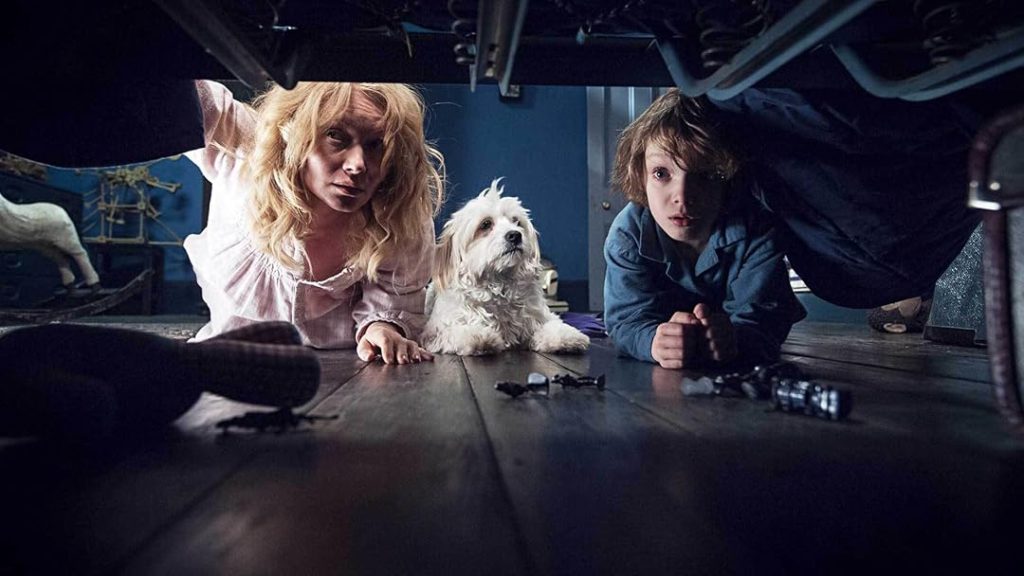
Chucky – Child’s Play series (1998 – onwards)
When asked to write about my #1 film villain, I was tempted to be cheeky and choose Todd Phillips, a man who’s put me through more torture in the cinema recently than I ever thought possible. But no, I must resist and contain my cynicism (if only to a mere sentence) and choose something more traditional.
That isn’t to say Chucky is boring; he’s hella fun! The first Child’s Play film from 1988 is a solid meat-and potatoes horror flick. But then came Child’s Play 2 in 1990, which turned things up, pulling off cuckoo set pieces and bold uses of colour, really leaning into the silliness of its main character. After all, he’s a red-headed, rainbow-jumpered doll inhabited by the soul of a voodoo-practising serial killer whose catchphrase is, “Hi, I’m Chucky. Wanna play?” This lad’s got silly stitched into his DNA. And sure enough, with each sequel, the franchise crept further into dark comedy. Entries such as Ronny Yu’s Bride of Chucky (my favourite, also featuring the best tagline of the series: Chucky Gets Lucky) and Seed of Chucky perfected a blend of gore and giggles.
While far from being cinema’s first creepy doll (Dead of Night [1945], Magic (1978), and Stuart Gordon’s Dolls [1987] come to mind) or the last (prepare to be inundated with M3GAN sequels), Chucky’s imprint on pop culture is unmatched. And though his TV show was recently cancelled after three fun-filled, blood-soaked seasons, you’d be a fool to write the iconic villain off just yet. Chucky will return. He always does… Brian Bowe
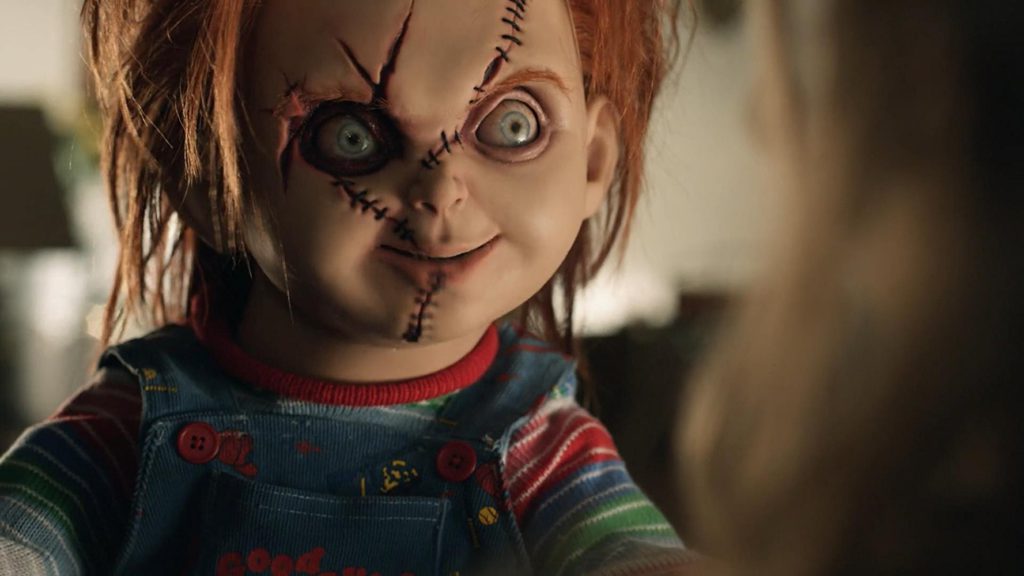
The Empty Man – The Empty Man (2020)
Few films feel as evil as The Empty Man. David Prior’s 2020 film drips with menace and malice from its snowy Himalayan-set opening to the overcast and oily remainder. Released during the COVID-19 pandemic and then buried on Disney+ The Empty Man has since risen to become a cult classic thanks to its nihilistic worldview, Lovecraftian undertones and the family-gone-foul drama that anchors it all. Grieving former detective James LaSombra (James Badge Dale) is hired by his neighbour to investigate the disappearance of her daughter, the only clue being the words “The Empty Man Made Me Do It” scrawled on her bathroom mirror. James’ investigation leads him towards cults, teen suicides and the Empty Man himself.
The Empty Man is a shadowy figure barely glimpsed through fog and darkness. A suggestion more than a shape he follows three rules. On the first night you hear him. On the second night you see him. On the third night he finds you. Seen mostly in statues, paintings and dreams the Empty Man, in keeping with all the entries I picked for this list, is more disease than monster. A virus emblematic of social ills and the isolated era into which he was born. It’s appropriate then that the human closest to this plague-like entity is a catatonic man but even so the Empty Man is universal, a ticking time bomb of a slow release illness. He came to exist within us all as COVID-19 gave way to the loneliness epidemic. If no man is an island then why does the gulf between us all widen so drastically with each passing year? The Empty Man is not a ghost or a spirit. He is our future. Andrew Carroll
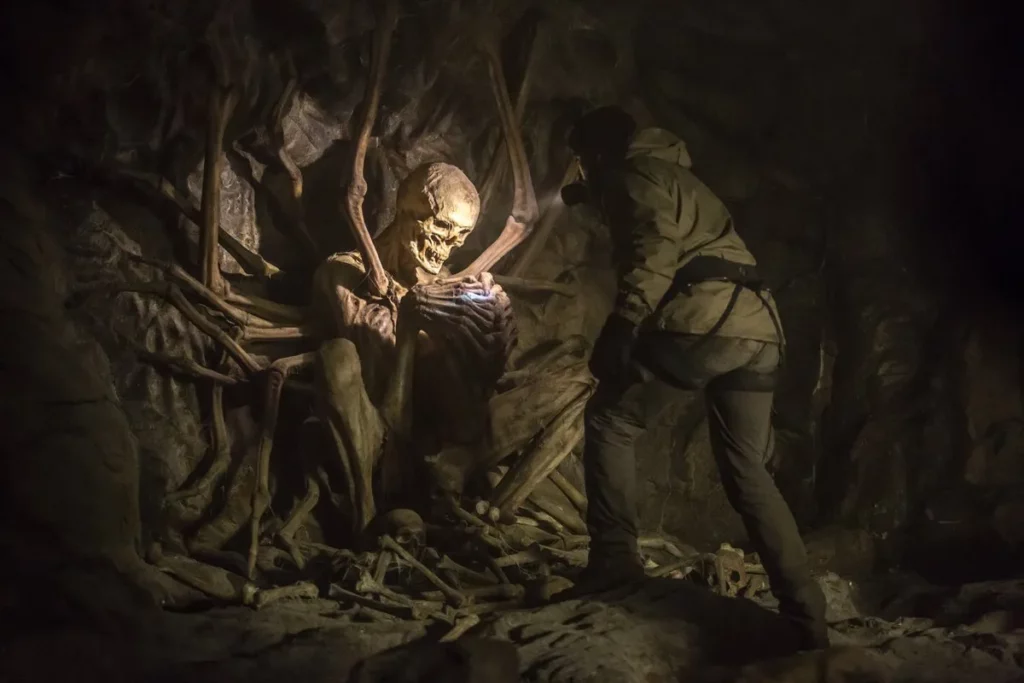
Ghostface – Scream series (1996 – onwards)
There’s something I find very very eerie each time Sidney Prescott answers the phone to Ghostface. And it’s not just the cinematic trivia traps set up for her, or the certainty that there are even more horrific surprises waiting as soon as she puts down the telephone.
It’s the fact that, demonstrating that she can go toe-to-toe – both linguistically and otherwise – with her nemesis, Sidney talks to Ghostface in a disturbingly familiar fashion. Which really really gets under my skin because, well, Ghostface isn’t actually a person. Ghostface is, when it comes to it, a collection of people. And also nobody. So what does that say about Ghostface? And what does it say about Sidney?
And yet, there’s an enduring quality to Ghostface that transcends each Scream instalment (no doubt helped by Roger L. Jackson’s sinister rasp, served up with a dash of cheek). You get the feeling that Sidney is talking beyond the killer, talking directly to the archetype inside (and of course outside) the cloaked human body. Heck, when Ghostface is a disembodied voice coming over the phoneline, the human vessels become little more than irritating hangers-on in the wider drama that is Sidney Prescott and Ghostface.
So the killers may come and go, but we will always have Ghostface. (And the good thing is we don’t need to watch the new Scream instalments where they treat the actresses like garbage for that to be true…). Sarah Cullen

It – It Follows (2014)
Outside of saying “I’ll be right back” having sex is the least fun a girl can have in a horror movie. The sex might be great, incredible even, it’s what happens afterwards that’s usually the problem. So it goes in David Robert Mitchell’s 2014 feature It Follows. Jay (Maika Monroe) is a young woman who after having sex with her new boyfriend finds herself pursued by an entity who will continue to chase her until it either kills her or she can pass the curse on to someone else.
It Follows opens itself up to a variety of interpretations from its subtext-as-text narrative of STIs being a literal walking, shapeshifting killer to attitudes on the dangers and liberties of the sexual revolution. As a piece of visual art It Follows has always fascinated with its nightmarescape, out-of-time Detroit setting and its refusal to clearly explain what the titular It is. Through wide-angle, slow pans Mitchell sets up his monster as a constantly lurking presence even when it’s not on screen. The fact it can appear as anyone whether they be living or dead, young or old, or even related to the victim in an especially sick Freudian scare is what makes the monster so compelling. It Follows reminds us that Jay is never safe and, by-proxy, neither are we. Andrew Carroll
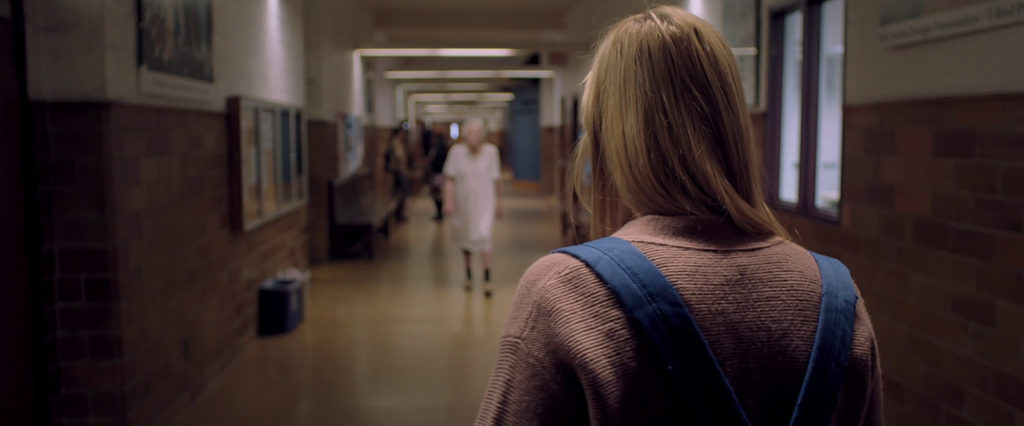
Norman Bates – Psycho (1959)
In the pantheon of horror iconography, there are few images as iconic as that of Bates Motel’s neon façade, flanked by a looming dark house. And at the precipice between that motel and house, a thin unassuming figure – that of the proprietor Norman Bates.
When a character is so intrinsically baked into cinematic canon, it’s hard to generate new comment or analysis. You can only reiterate what is well established fact. Norman Bates is a foundational figure of horror – you can draw a clear line from him, through to the stalking figure of Michael Myers, and on to the slasher sub-genre at large.
While the legendary visuals and music of Psycho are touchstones at this point, what makes the film so enduring and endlessly rewatchable, is the masterful performance of Anthony Perkins as Bates. He effortlessly inhabits a seemingly sweet and well-meaning motel manager, who hosts a delicately veiled layer of murderous intent and deep psychological derangement.
The famous parlour scene, where he shares a late supper with Janet Leigh’s doomed runaway Marion Crane, perfectly captures his layered, absorbing performance. Perkin’s vacillates between warm and friendly, almost childlike, but then reveals the hidden depths of threat within just for a moment – before course correcting and again being the sweet motel manager with his reassuring smile, and famous refrain: “we all go a little mad sometimes..”
While the shower scene that follows is what connected with the world at large, it’s the scenes of disarming warmth and simmering dread that made Norman Bates one of the truly classic horror antagonists. Jesse Melia

Sadako – Ring series (1998 – onwards)
It was 1998 and ghosts no longer haunted empty houses and old castles. They were in our phones, our websites and on our video tapes. As the new millennium dawned ancient fears clashed with modern anxieties to create new hybrid horrors. One such horror was Hideo Nakata’s Ring which saw journalist Reiko (Nanako Matsushima) investigating a videotape that kills its viewers seven days after they watch it. The murderer in question is the drowned ghost of the girl Sadako (Rie Inoo) whose tragic story was enough to inspire an obsession with Japanese Horror (or J-Horror) in the West.
It’s pure coincidence that the first syllable of Sadako’s romanised name is the English word for unhappiness, though it is fitting. Abandoned and brutalised for most of her childhood and adulthood, Sadako’s death in a dank well at the hands of her uncle causes a terrible curse to be born. It speaks to an apocalyptic, selfish view of the world that Reiko can only save herself from Sadako’s curse by passing the tainted tape on to others. It grows more prescient every year – and was especially so during the rolling lockdowns of the COVID years – that our need to connect is mutated by technology from an act of hope and love into acts of isolation and virulent hate. What better example of those feelings than Sadako, the ghost of a murdered girl that crawls out of our screens? Andrew Carroll
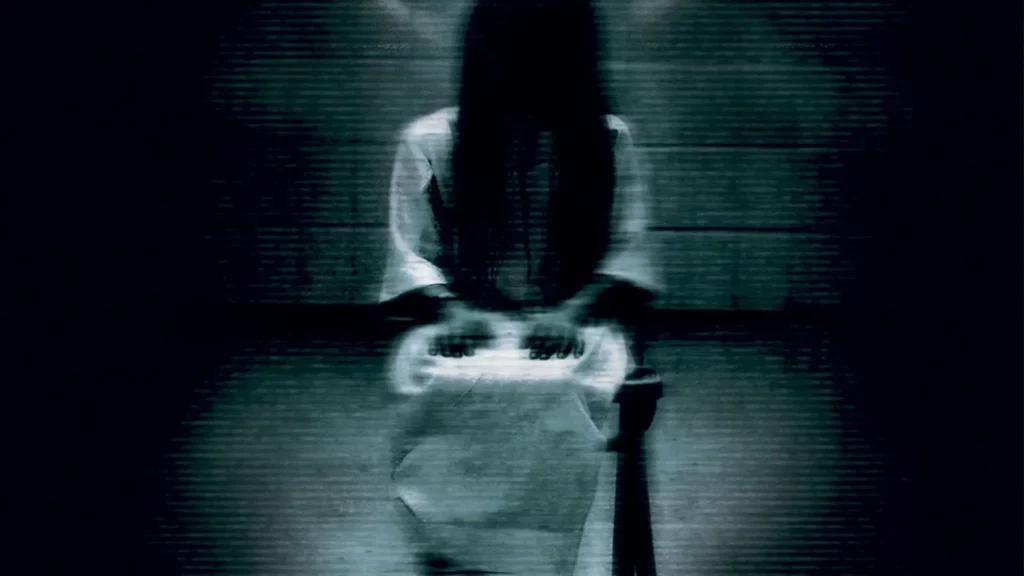
Xenomorph – Alien series (1979 onwards)
By now, the irrepressible train of IP has shorn a lot of the original threat from the xenomorph – the legendary creature from Ridley Scott’s classic alien. After years of blasting them in videogames, and seeing them in multiple iterations over nearly 10 movies, the veneer of fear has diminished somewhat. They’re part of the furniture at this stage (just the way the xenomorph likes it).
But cast your mind back to its original appearance, and the xenomorph remains an unequalled embodiment of cinematic fear. Its creation in Scott’s masterwork was a perfect confluence of amazing design, cinematic innovation, and perfectly pared back storytelling.
Many of the scares and kills – from its arrival, exploding through an unlucky John Hurt’s chest cavity, to its final appearance, following our hero Ripley on to her escape pod – are forever enshrined in horror history. Probably its most primal and effective, is the vent scene, where Tom Skerrit’s Dallas is stalked and ambushed, resulting in an all-time jump scare.
And while the shocks and scares made the xenomorph a hit with cinemagoers, it’s the story and design that has made it endure. Its birth, evokes unsettling visions of bodily invasion, and its final form – and eyeless phallic head, with a hateful permanent scowl – evokes real danger and malice. As Ian Holm’s Ash put it: “its structural perfection is matched only by its hostility.” Jesse Melia

??? – Malignant (2021)
*Spoilers ahead*
In James Wan’s 2021 action-horror slasher thriller, Malignant, the concept of “behind every great hero is a great villain” is taken quite literally. The film follows the protagonist, Madison Mitchell (Annabelle Wallis), who experiences terrifying paranormal visions involving a series of murders by a shadowy figure with long black hair and a black leather coat.
This figure is revealed to be Gabriel, who has a strong personal connection with Madison as a parasitic twin growing out from her back, with a head on the back of her head. This shocking reveal comes in the film’s bonkers final act, where Gabriel reveals himself and goes on a bloody killing spree. This twist might polarise audiences, but I found it to be a creative take on the “evil twin” narrative trope, and it gives the movie a very campy horror treatment. While the movie may have faded from memory for many, Gabriel remains a memorable and intimidating horror movie antagonist for me. He’ll always be at the back of my mind. Seán Moriarty

This post was originally published on this site be sure to check out more of their content.






